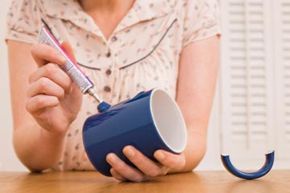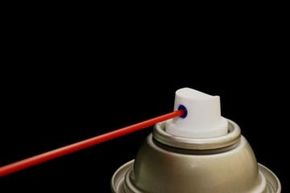Sometimes it feels like a conspiracy. Why else would a manufacturer or retailer affix stickers to a clear surface that you should view through? Perhaps they're in cahoots with the manicure industry because, after scraping tape and glue residue off a glass photo frame, that's exactly what we'll need.
Why is it so hard to get goo off glass? There are different types of adhesive, but most of the pressure-sensitive stickers and labels in the $26 billion global tape industry are made from super-sticky petrochemicals designed to have varying degrees of adhesion.
Advertisement
Most crafting stickers, for example, have an adhesive backing that allows you to reposition them. However, the type of adhesive you'll find on health alert or home alarm stickers is of the permanent variety. Weather-resistant and tamper-proof, permanent adhesives are the bane of those who later wish for their removal.
Somehow, we always end up unwittingly buying picture frames with price stickers melded to the glass with gusto. Or we've failed to confiscate our children's sticker collection — which they thoughtfully displayed on their bedroom windows when their teenage babysitter's attentions were otherwise occupied. The good news? We've uncovered a mix of products and efforts (some of them surprisingly simple) that successfully separate the adhesive from its smooth-surface muse. We'll share what works — on glass, at least — on the next page.




